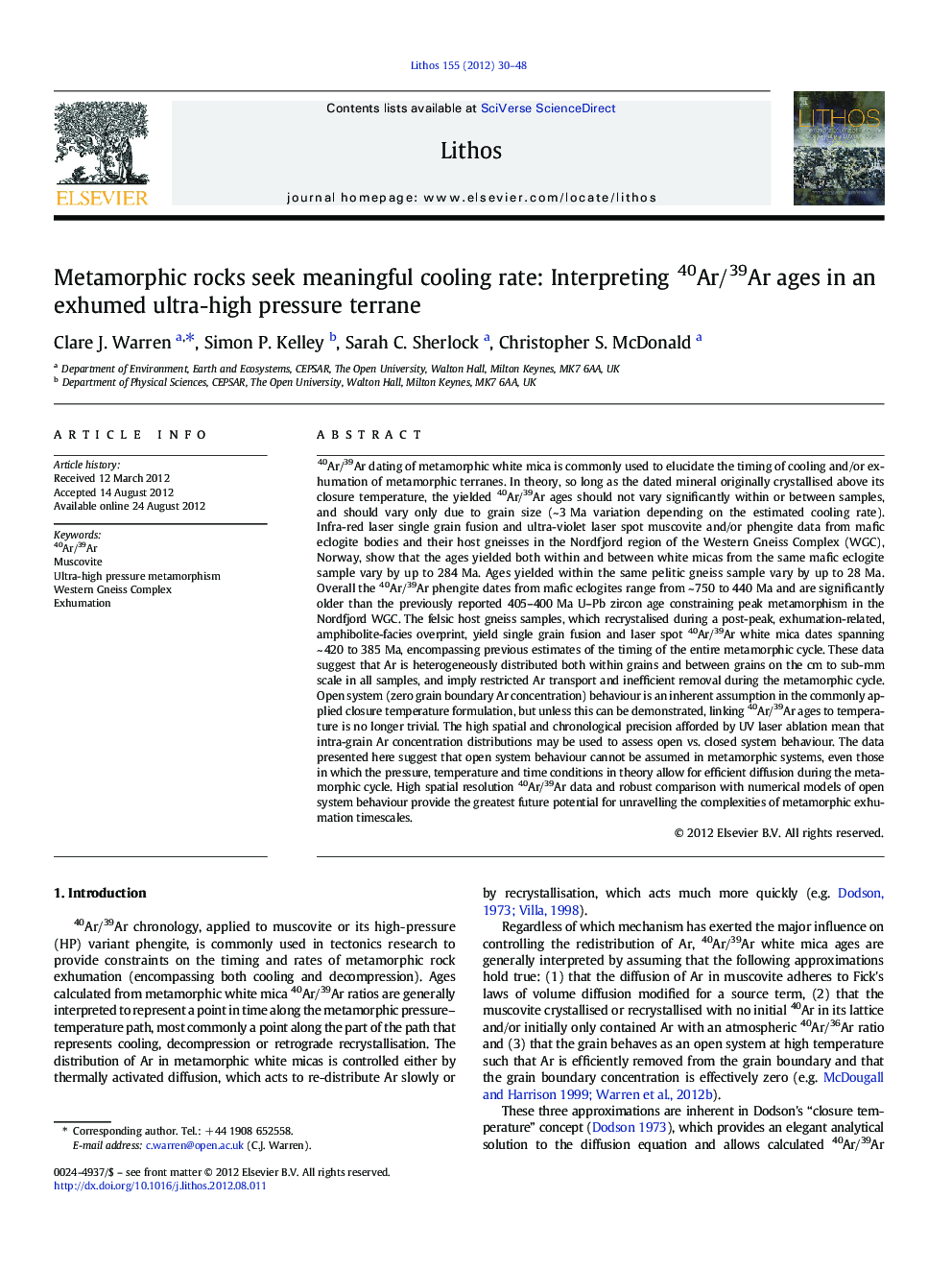| Article ID | Journal | Published Year | Pages | File Type |
|---|---|---|---|---|
| 4716345 | Lithos | 2012 | 19 Pages |
40Ar/39Ar dating of metamorphic white mica is commonly used to elucidate the timing of cooling and/or exhumation of metamorphic terranes. In theory, so long as the dated mineral originally crystallised above its closure temperature, the yielded 40Ar/39Ar ages should not vary significantly within or between samples, and should vary only due to grain size (~ 3 Ma variation depending on the estimated cooling rate). Infra-red laser single grain fusion and ultra-violet laser spot muscovite and/or phengite data from mafic eclogite bodies and their host gneisses in the Nordfjord region of the Western Gneiss Complex (WGC), Norway, show that the ages yielded both within and between white micas from the same mafic eclogite sample vary by up to 284 Ma. Ages yielded within the same pelitic gneiss sample vary by up to 28 Ma. Overall the 40Ar/39Ar phengite dates from mafic eclogites range from ~ 750 to 440 Ma and are significantly older than the previously reported 405–400 Ma U–Pb zircon age constraining peak metamorphism in the Nordfjord WGC. The felsic host gneiss samples, which recrystalised during a post-peak, exhumation-related, amphibolite-facies overprint, yield single grain fusion and laser spot 40Ar/39Ar white mica dates spanning ~ 420 to 385 Ma, encompassing previous estimates of the timing of the entire metamorphic cycle. These data suggest that Ar is heterogeneously distributed both within grains and between grains on the cm to sub-mm scale in all samples, and imply restricted Ar transport and inefficient removal during the metamorphic cycle. Open system (zero grain boundary Ar concentration) behaviour is an inherent assumption in the commonly applied closure temperature formulation, but unless this can be demonstrated, linking 40Ar/39Ar ages to temperature is no longer trivial. The high spatial and chronological precision afforded by UV laser ablation mean that intra-grain Ar concentration distributions may be used to assess open vs. closed system behaviour. The data presented here suggest that open system behaviour cannot be assumed in metamorphic systems, even those in which the pressure, temperature and time conditions in theory allow for efficient diffusion during the metamorphic cycle. High spatial resolution 40Ar/39Ar data and robust comparison with numerical models of open system behaviour provide the greatest future potential for unravelling the complexities of metamorphic exhumation timescales.
Graphical abstractFigure optionsDownload full-size imageDownload as PowerPoint slideHighlights► Up to 284 Ma range of 40Ar/39Ar ages within and between micas in a single sample ► Significant variations in inherited and excess Ar on a sub-mm to km-scale ► Variable grain boundary Ar and restricted fluid transfer on all scales ► Metamorphic 40Ar/39Ar ages depend highly on permeability of local environment. ► Implications for interpretations of all metamorphic white mica 40Ar/39Ar data
